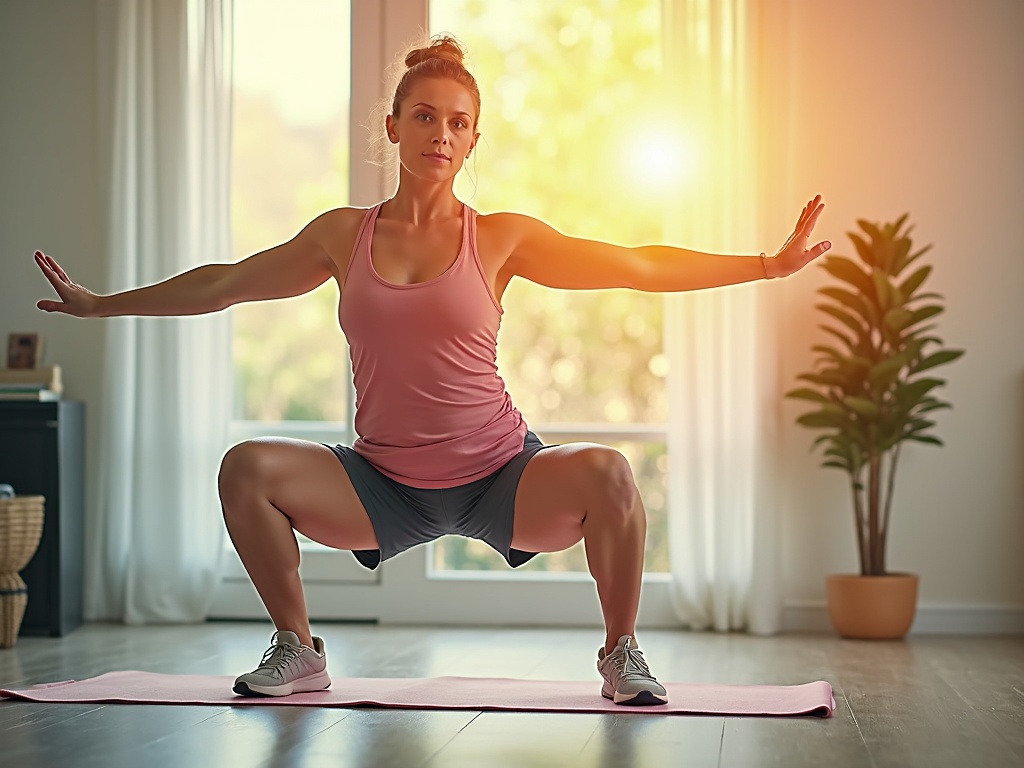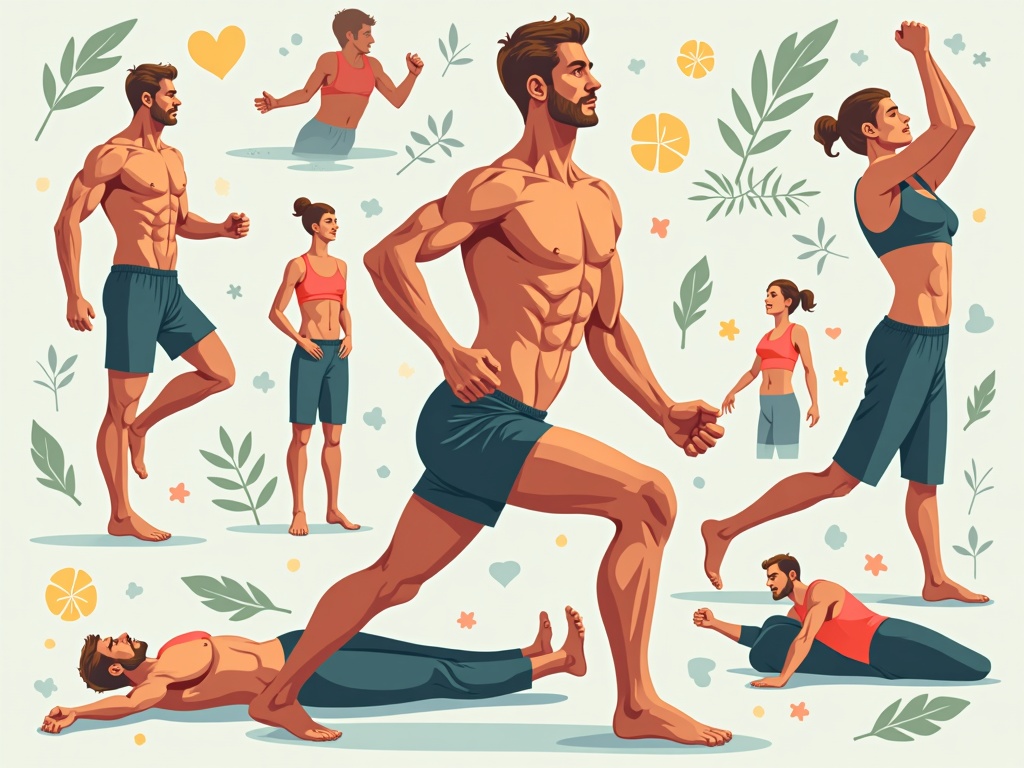Full Body Workout for People with Arthritis: Gentle Strength and Relief
Is arthritis trying to steal your joy of movement? Don't let it! You might think that joint pain means you have to sit on the sidelines, but that's simply not true. A carefully designed full body workout can be your secret weapon against stiffness and discomfort, helping you regain strength, flexibility, and a zest for life. This guide provides a safe and effective approach to exercise, empowering you to manage your arthritis symptoms and reclaim your body.
Understanding Arthritis and Exercise
Arthritis isn't a single disease, but rather an umbrella term for joint pain and inflammation. The two most common types are osteoarthritis, which involves the breakdown of cartilage, and rheumatoid arthritis, an autoimmune disease. While it might seem counterintuitive, exercise is one of the best things you can do for arthritis.
- Reduces Pain: Exercise can help to decrease pain and stiffness in your joints.
- Increases Strength: Strengthening the muscles around your joints provides support and stability.
- Improves Range of Motion: Regular movement keeps your joints flexible and mobile.
- Boosts Mood: Physical activity releases endorphins, which have mood-boosting effects.
- Weight Management: Maintaining a healthy weight reduces stress on weight-bearing joints.
Key Principles for Arthritis-Friendly Workouts
Before diving into specific exercises, it's crucial to understand the principles that make a workout safe and effective for people with arthritis.
Listen to Your Body
This is the most important rule. Pay attention to your pain levels. A little muscle soreness after a workout is normal, but sharp or persistent pain is a sign to stop and rest. Modify exercises as needed to avoid stressing your joints.
Start Slowly and Gradually Increase Intensity
Don't jump into a strenuous routine. Begin with gentle movements and gradually increase the intensity and duration of your workouts as your strength and endurance improve.
Focus on Low-Impact Exercises
High-impact activities like running or jumping can put excessive stress on your joints. Opt for low-impact exercises like walking, swimming, cycling, or using an elliptical machine.
Warm-Up and Cool-Down
Always warm up before each workout to prepare your muscles and joints for activity. A gentle cool-down after exercise helps to prevent stiffness and soreness.
Maintain Proper Posture
Good posture is essential for protecting your joints. Be mindful of your alignment during exercise and throughout the day.
A Sample Full Body Workout Routine
This workout routine is designed to be gentle, effective, and adaptable to your individual needs and abilities. Remember to consult with your doctor or physical therapist before starting any new exercise program.
Warm-Up (5-10 minutes)
Gentle Neck Rolls: Slowly rotate your head in a circular motion, both clockwise and counterclockwise.
Shoulder Rolls: Roll your shoulders forward and backward to loosen up the muscles.
Arm Circles: Make small circles with your arms, gradually increasing the size of the circles.
Wrist and Ankle Rotations: Rotate your wrists and ankles in both directions.
Marching in Place: Gently march in place, lifting your knees slightly.
Strength Training (20-30 minutes)
Wall Push-Ups: Stand facing a wall, place your hands shoulder-width apart on the wall, and lean in until your elbows bend. Push back to the starting position. (10-12 repetitions)
Chair Squats: Stand in front of a chair, lower yourself down as if you're going to sit, but stop just before your buttocks touch the chair. Stand back up. (10-12 repetitions)
Bicep Curls (with light weights or resistance bands): Hold a light weight or resistance band in each hand, curl your arms up towards your shoulders, and slowly lower them back down. (10-12 repetitions)
Tricep Extensions (with light weights or resistance bands): Extend your arms straight back, keeping your elbows close to your body. (10-12 repetitions)
Seated Rows (with resistance band): Sit in a chair with your feet flat on the floor. Hold a resistance band with both hands, pull the band towards your chest, squeezing your shoulder blades together. (10-12 repetitions)
Leg Extensions: Sit in a chair and straighten one leg out in front of you, hold for a few seconds, and lower it back down. (10-12 repetitions per leg)
Calf Raises: Stand near a chair or wall for support. Slowly rise up onto your toes, hold for a few seconds, and lower back down. (10-12 repetitions)
Flexibility and Range of Motion (10-15 minutes)
Gentle Stretching: Hold each stretch for 20-30 seconds. Avoid bouncing.
Hamstring Stretch: Sit on the floor with one leg extended and the other bent, reach towards your toes.
Quadriceps Stretch: Stand holding onto a chair or wall, bend one leg back and grab your ankle, gently pull your heel towards your buttock.
Shoulder Stretch: Reach one arm across your body and gently pull it towards you with your other arm.
Triceps Stretch: Reach one arm overhead and bend your elbow, gently push your elbow further down with your other hand.
Chest Stretch: Clasp your hands behind your back and gently straighten your arms, opening up your chest.
Cool-Down (5-10 minutes)
Repeat some of the warm-up exercises at a slower pace.
Focus on deep breathing to relax your muscles.
Modifications and Adaptations
It's crucial to adapt exercises to your individual needs and limitations. Here are some modifications you can make:
Wall Push-Ups: Increase or decrease the angle of your body to adjust the intensity.
Chair Squats: Use a higher chair for less depth or hold onto a sturdy object for support.
Bicep Curls and Tricep Extensions: Use lighter weights or resistance bands, or perform the exercises without any added resistance.
Seated Rows: Adjust the resistance of the band to make the exercise easier or harder.
Leg Extensions: Reduce the range of motion or only extend your leg partway.
All Exercises: Perform fewer repetitions or take longer rest periods between sets.
Listen to Your Body: The Golden Rule
Remember, the most important thing is to listen to your body. If you experience pain, stop the exercise and rest. Don't push yourself too hard, especially when you're just starting out. Over time, you'll gradually increase your strength and endurance, and you'll be able to do more. Overdoing it can lead to setbacks and discourage you from continuing your exercise program.
Other Important Considerations
Beyond the workout itself, several other factors can contribute to the success of your arthritis exercise program.
Proper Footwear
Wear supportive shoes that provide good cushioning and stability. Avoid high heels or shoes that are too flat.
Assistive Devices
Consider using assistive devices, such as a cane or walker, to help with balance and stability during exercise.
Water
Stay hydrated by drinking plenty of water before, during, and after your workout.
Proper Form
Focus on maintaining proper form during each exercise to avoid injury. If you're unsure about the correct form, consult with a physical therapist or certified personal trainer.
The Long-Term Benefits of Exercise
While this workout routine can provide immediate relief from pain and stiffness, the long-term benefits of regular exercise are even more significant. Consistent physical activity can:
Slow the progression of arthritis.
Improve your overall health and well-being.
Reduce your risk of other chronic diseases, such as heart disease, diabetes, and obesity.
Increase your energy levels.
Improve your sleep quality.
Enhance your mood and self-esteem.
Making Exercise a Habit
The key to reaping the long-term benefits of exercise is to make it a consistent habit. Here are some tips for sticking with your exercise program:
Schedule your workouts: Treat your workouts like any other important appointment.
Find an exercise buddy: Exercising with a friend can help you stay motivated and accountable.
Choose activities you enjoy: If you don't enjoy your workouts, you're less likely to stick with them.
Reward yourself: Celebrate your accomplishments along the way.
Be patient: It takes time to see results, so don't get discouraged if you don't see changes immediately.
Don't let arthritis define your limits. By embracing a gentle, consistent exercise routine, you can reclaim your strength, mobility, and joy of movement. It's time to take charge of your health and live life to the fullest, one step at a time.


